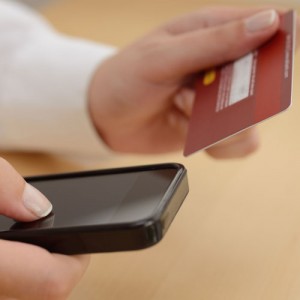How Merchants Can Identify Suspicious Transactions
 Sales staff in any company should be aware of signs in regards to customer behavior. Noticing a customer who shows signs of hesitation or may even seem uncertain when presenting their personal information, for example ones zip code or the spelling of a home address. Many times, these are the signals of a person using false identity.
Sales staff in any company should be aware of signs in regards to customer behavior. Noticing a customer who shows signs of hesitation or may even seem uncertain when presenting their personal information, for example ones zip code or the spelling of a home address. Many times, these are the signals of a person using false identity.
Card-not-present merchants should develop in-house policies and procedures forhandling irregular or suspicious transactions and provide appropriate training fortheir sales staff. Being able to recognize suspicious orders may be particularlyimportant for merchants involved in telephone sales. Employees should learn the instructions on steps to take when verifying suspicious transactions. An article in The New York Times stated, “Consumer Sentinel reports from the F.T.C. telling us that 800,000 people had reported actual lost of $1.2 billion in fraud and identity theft in 2007.” (6 August 2012)
Guidelines for Internet Merchants
Experience suggests that Internet orders with certain characteristics can be tip offs to possible fraud. Suspicious online transactions are similar to suspicious sales in other card-not-present environments, although the Internet offers additional opportunities for “virtual” scams. The following list of potential fraud characteristics will help you to avoid being victimized by Internet fraud. An Internet transaction with any one of these characteristics by itself is seldom causing for alarm; however, a transaction with several potential risk markers may mean you are the target of a fraud scheme.
Characteristics to watch out for include:
First-time shopper:
Criminals are always looking for new victims. They usually hit a merchant once and don’t go back a second or third time.
Larger-than-normal orders:Because stolen cards or account numbers have a limited life span, crooks need to maximize the size of their purchases. Of course, the sizes of “normal” orders vary from merchant to merchant.
Orders consisting of several of the same item: Having multiples of the same item increases criminals’ profits. Watch out for random orders, also for customers who don’t seem to care if a particular item is out of stock “You don’t have it in red? What colors do you have?” or who order hap-hazard “I’ll take one of everything!” Again, orders of this kind may be intended for resale rather than personal use.
Orders made up of big-ticket items: These items have maximum resale value and therefore maximum profit potential.
Orders shipped “rushed” or “overnight”: Crooks aren’t concerned about extra delivery charges. Urgent requests for quick or overnight delivery, the customer who “needs it yesterday,” should be another red flag for possible fraud. While often perfectly valid, rush orders are one of the common characteristics of “hit and run” fraud schemes aimed at obtaining merchandise for quick resale.
Orders from Internet addresses at free e-mail services: These services have no billing relationships with their users, which in turn mean no audit trail or verification that a legitimate cardholder has opened the account. Be aware of suspicious shipping addresses. Scrutinize and flag any order with a ship to address that is different from the billing address on the cardholder’s account. If a customer requests to ship merchandise to a post office box or an office address, this is often associated with fraud.
Keep lists of zip codes where high fraud rates are common and verify any order that has a ship-to address in these areas. If your business does not typically service foreign customers, use caution when shipping to addresses outside the United States, particularly if you are dealing with a new customer or a very large order. In examining what appears to be an unusual order, keep in mind that if the sale sounds too good to be true, it probably is.
Orders shipped to an international address: A significant number of fraudulent transactions are shipped to fraudulent cardholders outside of the United States. AVS can validate addresses in the United Kingdom, but other non-U.S. addresses cannot be verified.
This list is not a thorough or complete process. You should you not immediately cancel orders if you encounter one of the listed characteristics. This list is to help you to better identify fraudulent orders. Keep in mind that each of the characteristics listed above could reflect a legitimate order as well.




